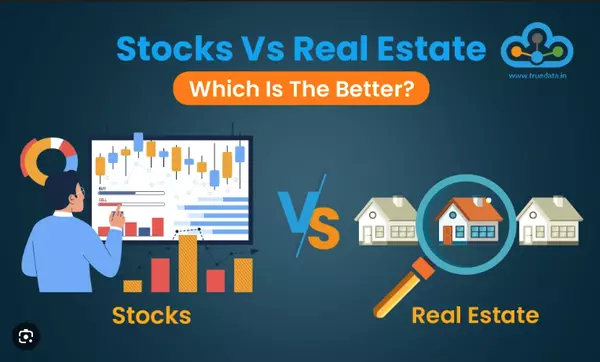How to Prepare Your Home for Sale (Staging Tips!)
🏡 How to Prepare Your Home for Sale (Staging Tips!)
Introduction: First Impressions Are Everything
Ever walk into a home and just feel like it’s the one? That’s not an accident—it’s staging done right. Whether you're in a hot seller’s market or a slower one, the way your home is presented can make or break your sale. Buyers decide emotionally and justify logically, so let’s make sure their first impression sticks—in a good way.
Why Staging Matters in Today’s Market
You might think, “It’s a seller’s market. Why stage?” Simple: even in fast-moving markets, the best-presented homes sell faster and for more money.
The Psychology Behind Buyer Decisions
People don’t just buy homes—they buy lifestyles. A staged home helps them envision themselves living there. If your house feels cluttered, dated, or personalized to you, it creates friction in their emotional connection.
How Staging Impacts Sale Price and Time on Market
According to multiple studies, staged homes sell 88% faster and for up to 20% more than non-staged ones. It’s not about tricking anyone—it’s about showing your home’s potential at its best.
🔧 Step 1: Declutter and Depersonalize
Before anything else, remove the noise. Clutter shrinks space, and personal items distract buyers.
What to Pack Away First
Start with:
- Family photos
- Personal toiletries
- Seasonal décor
- Kids' artwork
- Hobby collections
These things tell your story—not the buyer's.
What Buyers Want to See (and Not See)
Buyers want clean surfaces, organized closets, and spacious countertops. Visual clutter gives the illusion that a home is smaller or not well-kept.
🧼 Step 2: Deep Clean Every Inch
A deep clean does more than sparkle—it silently tells buyers this home was cared for.
Must-Clean Zones That Get Overlooked
- Baseboards
- Air vents
- Inside appliances
- Light fixtures
- Under sinks
You’d be surprised what people notice during a showing.
Hire or DIY?
If time or skill is an issue, hire professionals. Think of it as an investment—not a cost.
🎨 Step 3: Neutralize the Space
Bold colors and strong scents might appeal to you—but not everyone.
Why Paint Color Matters More Than You Think
Neutral colors like soft grays, beiges, and whites create a clean slate. Avoid red dining rooms or navy bedrooms; they’re polarizing and distracting.
Scent, Lighting, and Sound
- Scent: Go subtle—think fresh linen, not vanilla cupcake.
- Lighting: Natural light wins. Swap heavy drapes for sheers.
- Sound: Soft instrumental music can create ambiance during showings.
🪑 Step 4: Optimize Furniture Layout
Furniture should showcase the flow and function of each space—not just fill it.
Creating a Flow That Feels Spacious
Make sure walkways are open. Pull furniture away from walls to define zones and let the space breathe.
Less is More—Always
You don’t need three armchairs in the living room. Stick to basics and remove anything oversized or awkward.
🌳 Step 5: Focus on Curb Appeal
Buyers form opinions within seconds of pulling up. Let’s make those seconds count.
Front Yard Essentials
- Trim the lawn and hedges
- Power wash siding and walkways
- Touch up peeling paint
- Replace or polish house numbers
Entryway Upgrades That Pop
- Add a new doormat
- Repaint the front door
- Add potted plants or a seasonal wreath
Small touches = big impact.
🏠 Step 6: Stage Each Room With Intention
Now we tackle the inside—room by room.
Living Room
- Keep colors light
- Add throw pillows and a neutral rug
- Use plants for a pop of life
Kitchen & Dining
- Clear countertops except for a bowl of fruit or a plant
- Set the table with simple placemats and dishware
- Clean appliances and remove magnets from the fridge
Bedrooms & Bathrooms
- Make beds like a hotel (neat, neutral, layered)
- Roll white towels spa-style
- Tuck away toiletries and add a small plant or candle
💻 Bonus: Virtual Staging vs. Physical Staging
Can’t stage in real life? Virtual staging might be your answer.
Pros and Cons of Each
|
Type |
Pros |
Cons |
|
Physical |
Real feel, visible in showings |
Costly, time-intensive |
|
Virtual |
Fast, cheaper, good for online ads |
Not visible in person |
Use virtual staging for marketing, but don’t skip physical staging if people will be walking through.
📸 Final Walkthrough Before Listing Photos
Before the photographer arrives, do one final walkthrough:
- Are all surfaces cleared?
- Are lights working and on?
- Are blinds open?
- Is the toilet seat down? (yes, seriously)
Photos are your home’s first showing—they must impress.
⚠️ Mistakes to Avoid When Staging
- Leaving too much furniture
- Ignoring weird smells
- Forgetting about closets (buyers open them!)
- Over-staging to the point it feels fake
- Neglecting exterior maintenance
Every detail counts. If you wouldn’t showcase it on Instagram, it shouldn’t be in the house during a showing.
🎯 Conclusion: Set the Stage to Sell
Staging isn’t about trickery—it’s about storytelling. You’re showing buyers the best version of what life could look like in your home. When done right, staging doesn’t just sell the property—it sells the vision.
A little effort now can lead to faster offers, higher prices, and smoother negotiations. In this market, that's not just helpful—it’s essential.
FAQs
- How much does it cost to stage a home?
Costs range from $500 to $5,000 depending on size, condition, and whether furniture rentals are needed. - Do staged homes really sell faster?
Yes. On average, staged homes sell 30–50% faster than unstaged ones. - Can I live in my home while it’s staged?
Absolutely. Just maintain the setup between showings and keep clutter to a minimum. - Should I stage an empty home or leave it vacant?
Staged is always better than empty—it gives rooms purpose and scale.
For many homes, yes. If you're organized, have an eye for design, and follow best practices, DIY can be highly effective.
Categories
Recent Posts










GET MORE INFORMATION

Agent
